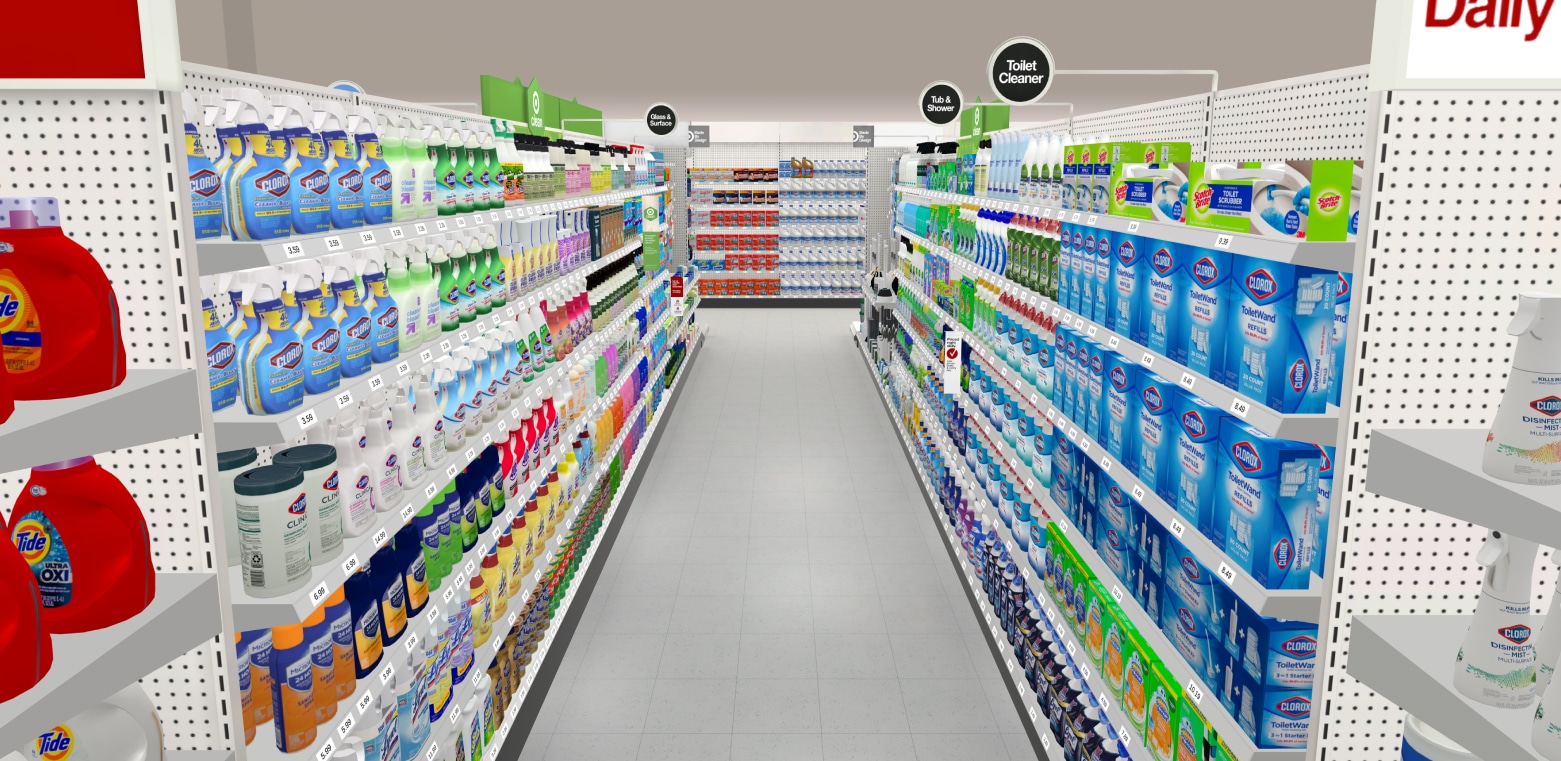Virtual Reality & 3D Planogram Software Are Redefining Retail Merchandising
Retail is evolving fast — and leading brands are adapting with 3D planogram software. This technology empowers retailers to design, test, and visualize store concepts in immersive, digital environments, streamlining everything from space planning and merchandising to market research and team training.
With the global virtual reality sector projected to grow more than 20% by 2027, retailers are increasingly adopting 3D planogram software as a scalable, cost-effective way to innovate. By creating true-to-life virtual stores, teams can optimize resources, accelerate execution, and confidently bring their in-store strategies to life.
Below are six ways retailers are using 3D planogram software to strengthen planning, enhance execution, and elevate the in-store experience.
Smarter Space Planning
Traditional store resets are time-consuming, labor-intensive, and costly. 3D space planning software allows retailers to visualize and refine layouts in realistic digital store environments before making any physical changes.
- Experiment freely: Test and adjust layouts in minutes without the disruption or expense of physical resets.
- Plan with precision: Life-size digital environments eliminate guesswork, helping teams optimize flow and product visibility.
- See it before you build it: Experience every fixture and layout to scale, exactly as it will appear in-store before implementation.
By using 3D planogramming for pre-visualization, retailers can make smarter, faster space decisions and reduce the risk of costly errors during rollout. This virtual-first approach helps retailers bridge planning and execution more seamlessly — a core principle for One Door’s Digital Store Model.
Faster Merchandising Decisions
3D planogram software takes visual merchandising beyond static shelf mockups. Retailers can design, test, and refine unlimited merchandising strategies within realistic VR environments using true-to-scale fixtures, products, and signage.
- Create with flexibility: Import digital assets, drag and drop products, and adjust assortments instantly — no prototypes required.
- Visualize in context: See planograms come to life in interactive 3D environments that mirror real store conditions.
- Decide with confidence: Compare variations, test adjacencies, and gain approvals faster, leading to more agile merchandising and higher sales potential.
This shift helps teams align creative vision and operational precision, turning visual merchandising from a manual process into a dynamic, iterative workflow.
Data-Driven Market Research
3D and immersive VR tools now play a central role in customer research, helping retail marketing teams understand how shoppers interact with products, displays, and layouts before anything hits the floor.
- See how shoppers really shop: Simulate real-world store experiences using virtual environments with eye-tracking and movement analytics that capture engagement, dwell time, and navigation patterns.
- Turn insights into action: Use heatmaps and behavioral dashboards to improve visibility, refine product placement, and guide your visual merchandising strategy.
- Test before you invest: Virtually evaluate new concepts and campaigns to minimize risk, control costs, and launch with greater accuracy.
By combining visualization and behavioral data, retailers gain a clearer view of what drives attention and conversion without the time and expense of traditional in-store testing.
Engaging Training & Education
Virtual reality also doubles as a powerful training tool. Store teams can walk through life-size, virtual replicas of their stores to learn merchandising standards, visualize planograms, and practice execution before hitting the sales floor.
- Train in context: Simulate real-world store scenarios using digital fixtures, products, and layouts in a risk-free environment.
- Increase retention: Immersive, hands-on learning improves employee engagement and helps associates execute with confidence.
- Scale efficiently: Replace costly, time-intensive in-store sessions with digital programs that deliver consistent training across locations.
This approach shortens onboarding, strengthens store compliance, and ensures store teams execute each planogram the right way — the first time.
Realistic Store Visualization
3D planogram software brings store concepts to life before rollouts, turning static plans into immersive, shareable experiences. Retail teams can create virtual walkthroughs for leadership reviews, brand presentations, or cross-functional alignment.
- Give interactive tours: Share 360° walkthroughs on headset or desktop to showcase layouts, fixtures, and displays as they’ll appear in store.
- Engage stakeholders: Let teams, partners, or clients navigate aisles and experience the concept firsthand.
- Present with impact: Replace static slides with interactive visualizations that inspire alignment and drive decision-making.
These shared virtual views align every stakeholder, ensuring that the vision designed at HQ is executed consistently in every store.
The Next Step: From 3D Visualization to Digital Execution
Traditional planograms helped shape modern visual merchandising, but VR planogram software has elevated what’s possible — making store planning more accurate, efficient, and collaborative. The next step is connecting 3D visualization to live digital execution.
That’s where One Door takes store planning further — uniting 3D visualization, real-time data, and store-specific execution in one connected platform.
Download our Practical Guide for Planning and Planogram Distribution to see how retailers are moving beyond static PDFs and fragmented tools to a unified, digital approach that connects design, planning, and execution across every store.
